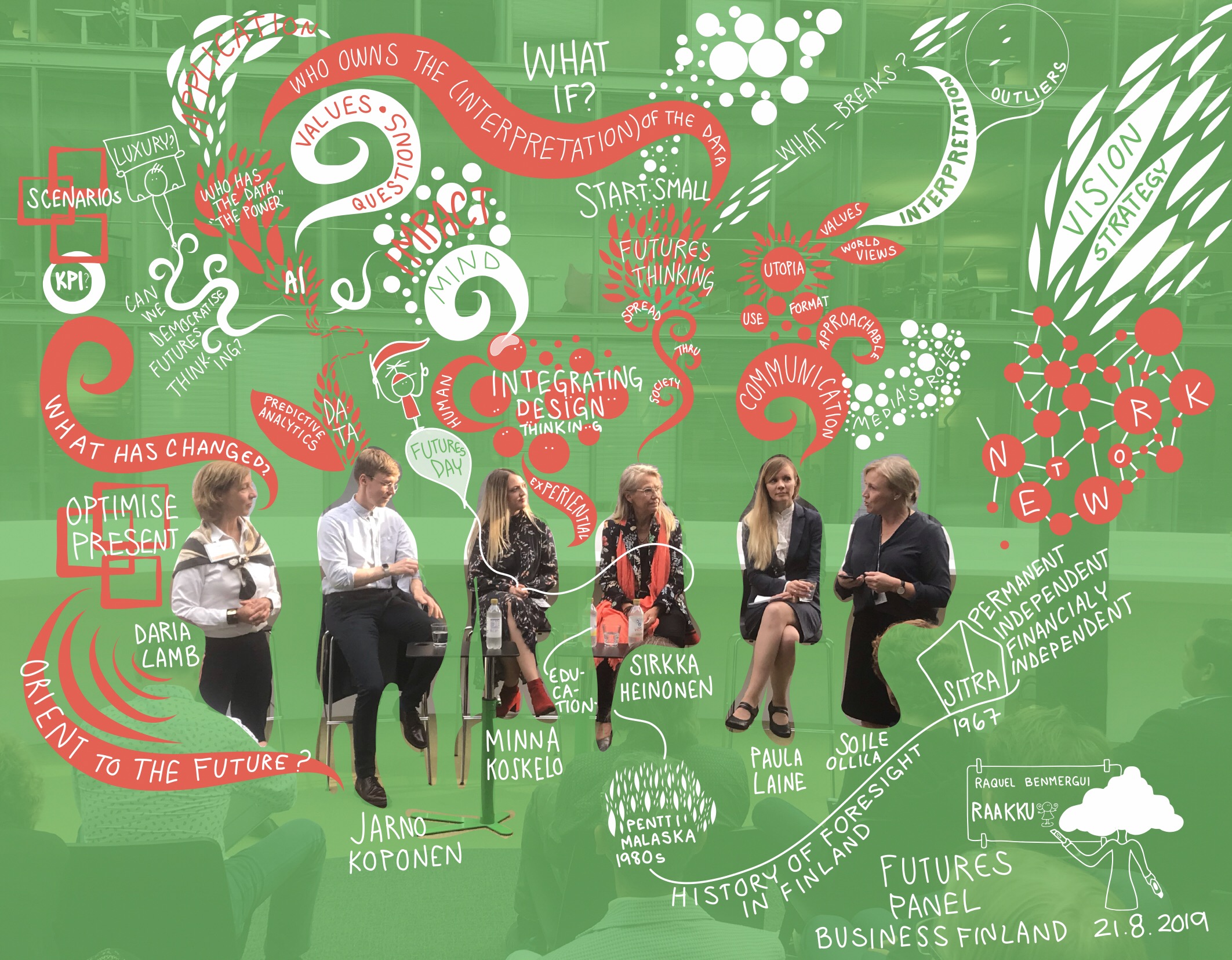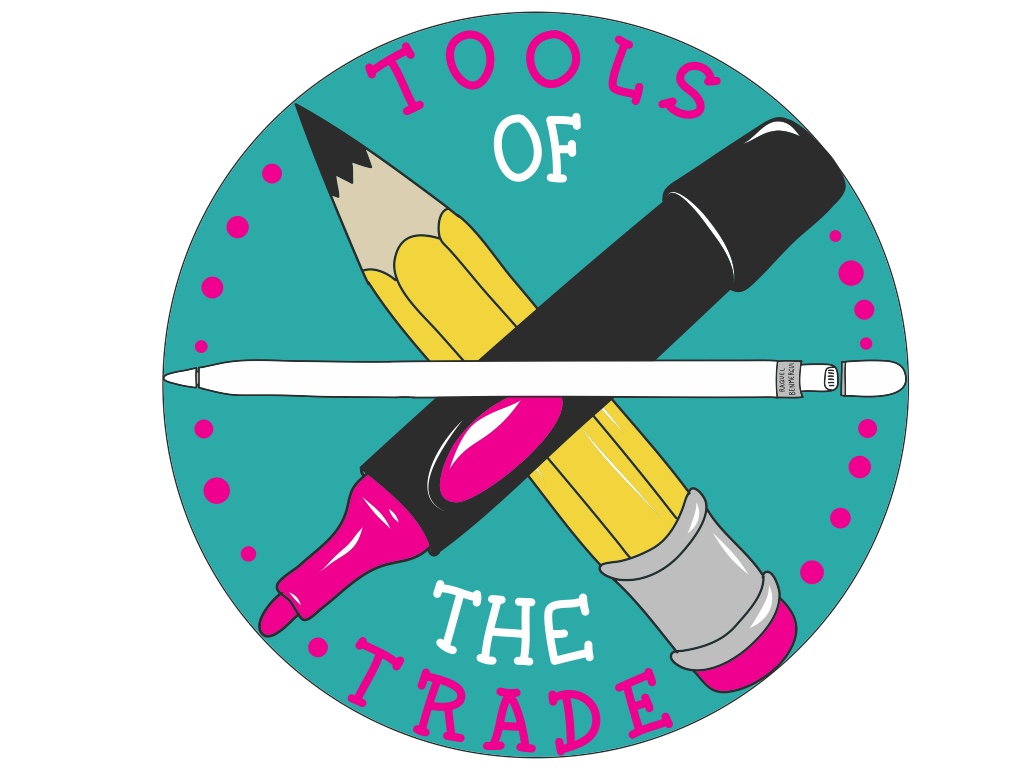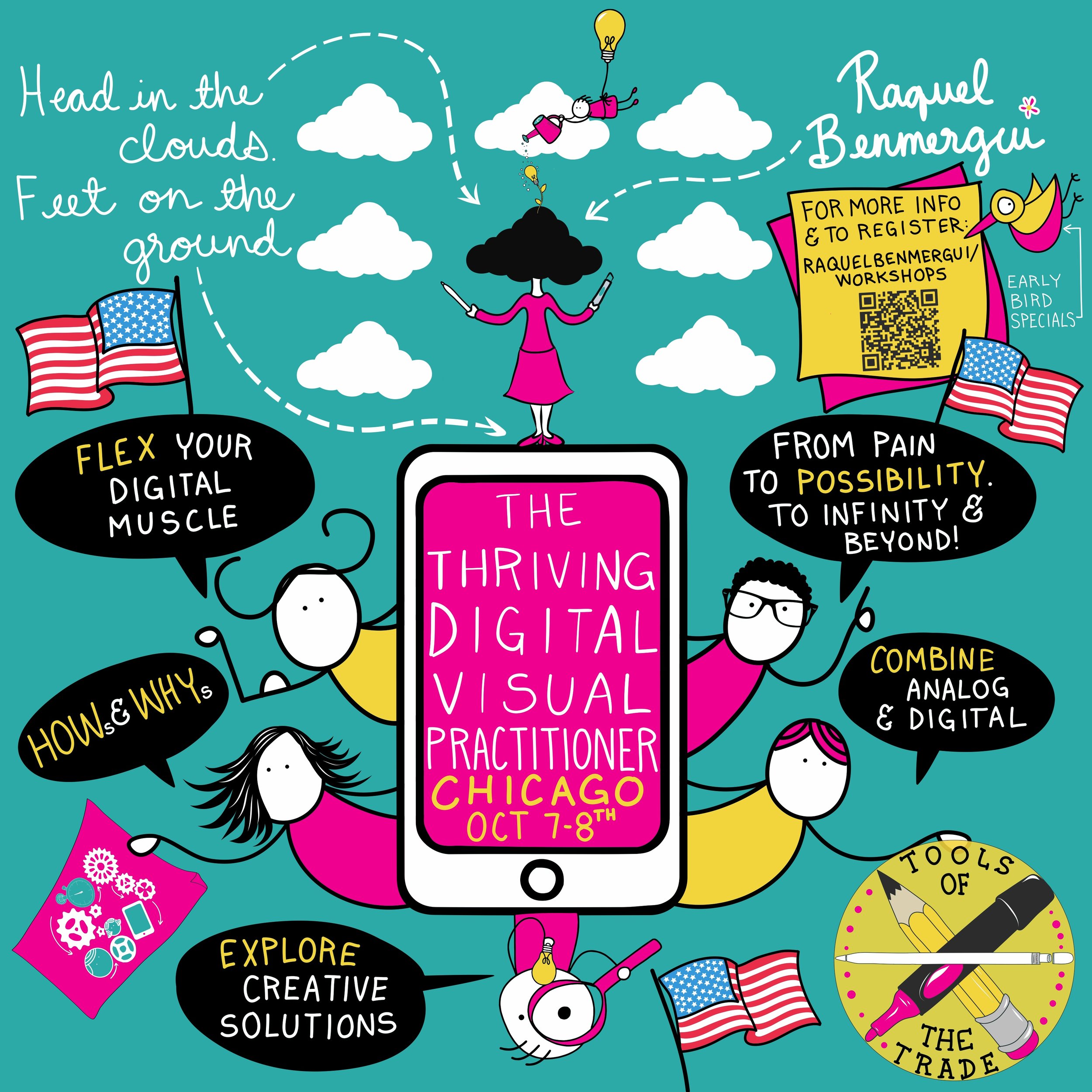This was my latest digital visual capture of a panel discussion co-hosted by the Institute for the Future (Palo Alto, California) & Business Finland (Helsinki)
This is my year of doing things differently. Is it yours, too?
Among the many ways I shook up my life this year, I made 3 bigger changes—
1. I left my university teaching position.
2. I began sharing my knowledge & experience as a visual practitioner by organising workshops in different parts of the world, by reaching out to colleagues for possibilities to cooperate & by sharing more online—and now by blogging & creating newsletters.
3. Aaaand I welcomed a puppy into our family!
I will perhaps write more one day about leaving my university post & getting a puppy, but for now I will focus on sharing my experiences and knowledge—specifically when it comes to working digitally. I recently gave a one-hour workshop on Adobe Illustrator Draw (including some bits on Adobe Capture in the Digital Scribing Fireside Chat Series sponsored by the IFVP and hosted by Heather Leavitt Martinez. Here are some of the thoughts I shared around the gear & planning that goes into working live.
Working live: My gear
I love to work live on my iPad Pro, using the Adobe Illustrator Draw app. You can of course use any drawing app you feel comfortable with, but I have enjoyed the simplicity of Draw. The only thing that I recommend when working live with any drawing app is that you stick with a specific app for several months. You need to develop muscle memory so that you are able to use the app without thinking. I have been beta testing Adobe’s new app Fresco that offers a lot more range and possibility.
What gear do I take with me when working live? Here is an image that helps to explain what I need.
I work on a 2nd generation 10,5¨ Ipad Pro. I haven’t upgraded to a newer iPad Pro as I did not see any real value in the latest upgrade except for the Apple Pencil update. (But that wan’t enough to make me switch)
I started working digitally on a 1st generation iPad, my finger and a rubber-tipped stylus—so I am not complaining as nowadays I think almost everything is possible on today’s tablets. I originally purchased a large 1st generation iPad Pro when they first came out, but I chose to purchase a smaller 2nd generation iPad Pro because I felt that the larger iPad was too heavy and my arm would cramp when holding it up.
When working live I always have the following with me:
- 2 apple pencils—after one traumatic experience with one just malfunctioning completely!
- 2 HDMI adapters (as sometimes they can be finicky and stop working. Always store them flat and do not keep them folded in your bag.)
- 1 VGA adapter in case there is an old school canon onsite
- 1 Apple TV, only if there is tech support, as I have had some issues with instability—but love the freedom!
- 1 extension cord to make sure I can charge my device close by
- 1 power bank—go to a computer store and ask them for one that can charge an iPad Pro & your phone at least once before it becomes depleted
- 2 chargers—one to charge my iPad, 1 to charge my phone/Apple Pencil
Co-operation with tech personnel & planning beforehand
The tech personnel on site are your best friends and needed for larger events (although they are not always so happy to see you show up with an iPad!)
There are so many ways to organise your work flow in cooperation with the audio/visual tech personnel or alone if you know your way around the equipment being used.
You must first decide:
1. Will your visuals be shown real-time? If so, will the speaker’s slides be projected on one screen and your visuals on another screen/display off to the side?
Or will your visuals be projected in place of the speaker’s slides?
2. You have many choices with how you can organise this.
a. You can be show your work the entire time as it emerges (via HDMI, VGA or Apple TV)
b. You can have your work shown only during the Q&A, in between talks and during the coffee/lunch breaks.
- The low-tech option is to only attach your iPad to the canon when you want to share your screen, leaving it unattached while you are drawing.
You can also take a screenshot and send the image quickly via Airdrop, email or Dropbox to the tech help and they can project it at the right moment.
Or you can send it to your own laptop which is plugged into the system and share your laptop’s screen.
These two last options free you to work on your iPad while the image is being projected.
Merge analogue & digital methods
For multiday events, you can merge the analog & digital worlds. Project your work throughout the day and have the images printed on the same day or overnight in a large format (A1/A0) to create gallery spaces in order to support double loops of information.
This is an example from a multiday event with The Finnish Post & Singularity University
You can also use quick onsite printing possibilities and have your digital captures printed in colour in A4 size, giving them to participants as handouts to support their process.
This is a photo of a multiday event held by Sitra and supported solely through inspirational talks, dialogue circles and visual capture—all ways of capturing and feeding knowledge back into the room.
There are so many possibilities to explore! I think that both hi-fi and lo-fi methods can offer so much. I am a both/and thinker, not either/or.
Start with WHY
Regardless of whether you are working hi-fi or lo-fi, the important place to start is the goal of the event/group process and the reason why you would like to use visual methods or graphic facilitation/recording. Then you can start considering which methods would best support the process and if it would be better to work digitally or analogue…or some hybrid version.
Educate your client and inform them beforehand about the possible configurations. Clients need to be sent more instruction when working digitally.
It is all about continuous development
I am committed to doing things differently this year—maybe you are too? Try using digital methods or if you are comfortable working digitally, then maybe try a different workflow or way of projecting your work live. Let me know how it goes!
If you are interested in learning more in person, I will be in Chicago 7-8th of October giving my “Thriving Digital Visual Practitioner” workshop where I will be openly sharing all of my digital tips and tricks—and pushing you to the next level!
Next time, I will be sharing my tips on how to be quicker when working live & large—and digitally! Until then, you can check out my portfolio for some ideas on how you might do things differently.






